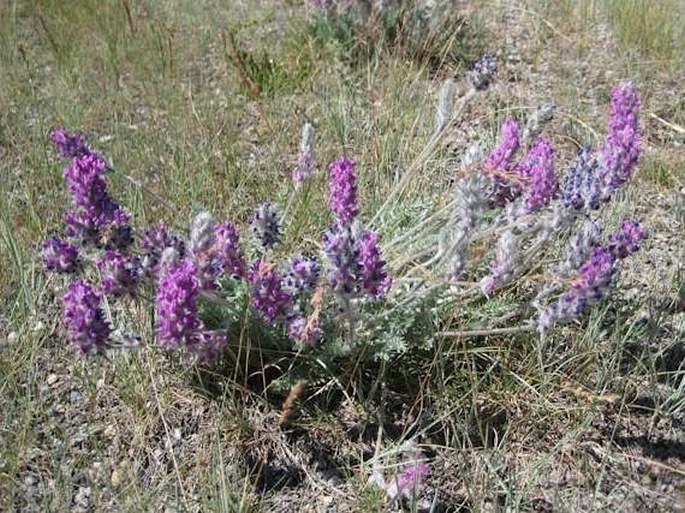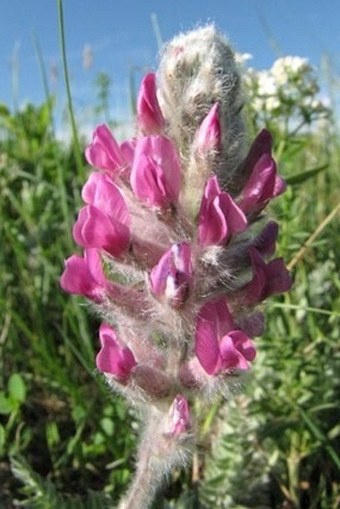Syn.: Aragallus splendens (Douglas) Greene, Astragalus splendens (Douglas) Tiderstr., Oxytropis richardsonii (Hook.) K. Schum., Spiesia splendens (Douglas) Kuntze
Family: Fabaceae Lindl.

Distribution: North American species found from central Alaska, Canadian Yukon and southwest of Northwest Territories, through British Columbia, Alberta, Saskatchewan and Manitoba to western Ontario and southward along the Rocky Mountains from Montana to New Mexico.
Ecology: Grassy slopes, forest clearings and margins, rocky areas and along roads. Blooms in June and July.

Description: Perennial herb, silky-haired throughout. Stem decumbent to erect, 10–35 cm tall; leaves 7–25 cm long, pinnately compound, 7–15 whorls of 3–4 leaflets, elliptical to lanceolate, 10–25 mm long, covered with long, white, silky hairs. Inflorescence is spike-like raceme, 12–35-flowered, 3–8 cm long; calyx hairy; corolla 10–15 mm long, blue to reddish purple. Fruit is legume, ovoid, papery, 10–17 mm long, covered with woolly hairs.
Note: The cattle consumes this plant only in absence of any suitable grazing and with catastrophic results. Locoweed, as the name suggests (crazyweed from Spanish) causes cattle poisoning due to large amounts of selenium it contains. Afflicted animals lose balance, behave as crazy and die.




These images were taken in Canada, Alberta, Waterton Lakes NP and Calgary, Confluence Park and Nose Hill Park (by Karel Bergmann, July and August 2013) and Waterton Lakes NP (by Vít Grulich, 30. 7. 2007).


